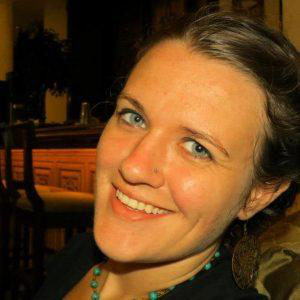
I spend a good portion of my time reading other blogs and looking for ways to improve how I manage my personal finances. And I can assure you, there is no shortage in the number of resources and ideas out there. While I have built my savings philosophy from several models, one idea has been stuck in my brain. Taking the traditional Four Buckets System, Tiffany Aliche has modified it to her budgeting goals as well. Her approach, while straightforward, got me thinking, are four accounts enough to manage your finances?
THE FOUR BUCKETS SYSTEM
Portfolio managers and investors alike should be familiar with the bucket system in banking. The general concept utilizes “buckets” or accounts for a grouping of assets, or in this case, a bank account. Each account is designated for a specific purpose to keep you motivated toward your financial goals.
You can also apply the same idea in your approach to budgeting. Separating your monthly income into designated accounts can prevent you from overspending and help you achieve greater financial independence. According to Aliche’s model, you only need four accounts to manage your finances:
- one for bills
- one for your emergency fund
- one for savings
- one for spending
While I agree in theory, the model seems a little too simplistic, especially when I am trying to run a business. So, I decided to put my own habits under the microscope and figure out exactly how many accounts I need to efficiently manage my finances.
ACCOUNTS TO MANAGE PERSONAL FINANCES
Over the years, I’ve had dozens of personal accounts. My parents opened some for me. A few international employers I’ve worked with have required payment through particular banks. And others I maintained simply because I had them. By the time I was 30, I had more than a dozen accounts in three separate countries.
It was becoming difficult to remember where I had accounts, let alone keep track of them all. So, I decided to make a change. In an effort to streamline my personal finances, I began to close and consolidate my accounts. I started by transferring funds and closing the international ones that I no longer used. Then, I closed two more accounts after a serious security breach exposed some of my personal information. Finally, I merged those that were remaining into a single high-yield savings account, a checking account, and an investment account.
SAVINGS ACCOUNT
The first thing I set up was my emergency fund in a high-yield savings account. I put aside six months’ salary into a money market account where it would accrue more interest than a traditional savings account. This account has no debit card and is only to be used in case of emergencies.
CHECKING ACCOUNT
My checking account is the most active one of the lot. I use it for all my monthly spending, including bills and personal expenses. While other people prefer to keep these separate, I find it easier to track my monthly expenditures through a single account. It also offers advanced tools that will break your spending down by category, compare balances from month to month, and show you exactly where your money is going. It also helps me to be more mindful of my habits and indicates when I need to reign things in.
INVESTMENT ACCOUNT
Some people look at investment accounts as a separate beast, but I consider them my “long-term” savings accounts. There are a variety of account types that I use for investing, but they are all managed by a single brokerage firm. Having these dedicated accounts makes it a higher priority for me and ensures that I continue to build towards my future goals.
ACCOUNTS FOR BUSINESS FINANCES
The primary reason I diverge from the Four Buckets model is that I also need accounts to manage my business’ finances. Therefore, I need additional buckets to keep them separated from my personal accounts.
However, I took it one step further and maintain accounts with an entirely different institution as well. We have several local credit unions that regularly offer incentives to small business owners. So, I cashed in on the advantages and do all my business banking through them. I use these accounts to send and receive payment for services and then transfer my “salary” into my personal checking account.
Not only does this prevent me from misdirecting funds, but it also helps me track expenses for tax purposes. Since I regularly monitor and transfer funds between my business and personal accounts, I am hyper-aware of my financial situation. It also makes it much simpler when tax time comes around. Rather than spending hours reviewing receipts, it takes me less than an hour to compile my information since I review my budget every month.
FINDING A SYSTEM THAT WORKS FOR YOU
Upon closer inspection of my situation, I find myself in even stronger agreement with Aliche’s approach to budgeting. However, it seems that I’ve combined categories and modified her model to incorporate my business and investment accounts as well. Even though my categories and the number of accounts vary slightly, the Four Buckets method is an effective and low-effort way to stay in control of your finances.
The truth is that personal finance isn’t an exact science, and there are no right or wrong ways to approach it. People may try to convince you that there is only one way to do things. But remember, just because the system works for some people doesn’t mean it will work for everyone. You need to develop a system that makes sense for you. In reality, the best solution is one that will be easy for you to maintain. Once you understand your personal habits and set your long-term goals, you can tailor your buckets to maximize your chances of success and help you stick to a budget.
Bonus idea: If you’re struggling with your money, a good idea is get educated – you could try reading personal finance blogs or otherwise hit the books.
Which budgeting method works best for you? Share your ideas in the comments below!
READ MORE
- Ways to Improve Your Money Management Skills
- Tips for Proper Budget Management
- Top Budget Apps To Save Time

Jenny Smedra is an avid world traveler, ESL teacher, former archaeologist, and freelance writer. Choosing a life abroad had strengthened her commitment to finding ways to bring people together across language and cultural barriers. While most of her time is dedicated to either working with children, she also enjoys good friends, good food, and new adventures.






